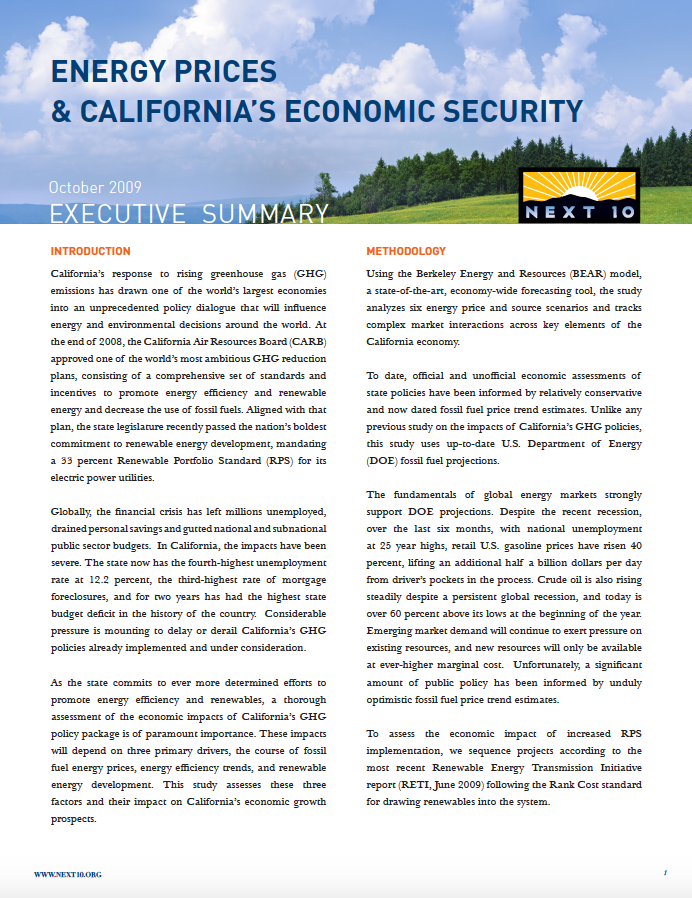Publications
Energy Prices & California’s Economic Security
New Next 10 report finds that energy efficiency and renewables offer a valuable hedge against the risks of higher fossil fuel prices, quite apart from the fact that fossil fuel consumption generates over 80 percent of global GHG emissions.
Using price forecasts from the U.S. Department of Energy’s Annual Energy Outlook (AEO), Energy Prices & California’s Economic Security estimates that without diversifying California’s energy portfolio toward more renewable fuels and energy efficiency, the state risks a loss of over $80 billion in Gross State Product (GSP) and more than a half million jobs by 2020. Implementing 33 percent renewable energy, combined with 1 percent annual improvement in energy efficiency, on the other hand, shields the economy from higher energy prices and yields a growth dividend, increasing GSP by $20 billion and generating 112,000 jobs.
Over the last six months, even as national and state unemployment remain at 35- and 79-year highs, respectively, retail U.S. gasoline prices have risen 40 percent and crude oil prices have risen 60 percent, lifting an additional half of a billion dollars per day from drivers' pockets in the process.
The study assesses the impact on California's economic growth prospects of three primary drivers: the course of fossil fuel energy prices, energy efficiency trends, and renewable energy development. Using the Berkeley Energy and Resources (BEAR) model, a state-of-the-art, economy-wide forecasting tool, the study analyzes six energy price and source scenarios and tracks complex market interactions across the California economy.
- Without changing the state energy mix, under official fossil fuel energy price trends projected by the U.S. Department of Energy's AEO, private electricity costs in California would be up to $100 per person higher in 2010 (already $100 above today's prices), making electricity up to 33 percent more expensive.
- If fossil fuels follow the AEO trend, and the state does not implement its climate priorities, California's economy will shrink by $84 billion and over half of a million jobs in 2020.
- Diversifying California's energy portfolio to include 33 percent renewable energy and one percent annual improvement in energy efficiency significantly shields California's economy from higher energy prices, resulting in lower consumer costs, increasing GSP by $20 billion and boosting jobs by 112,000 by 2020.
